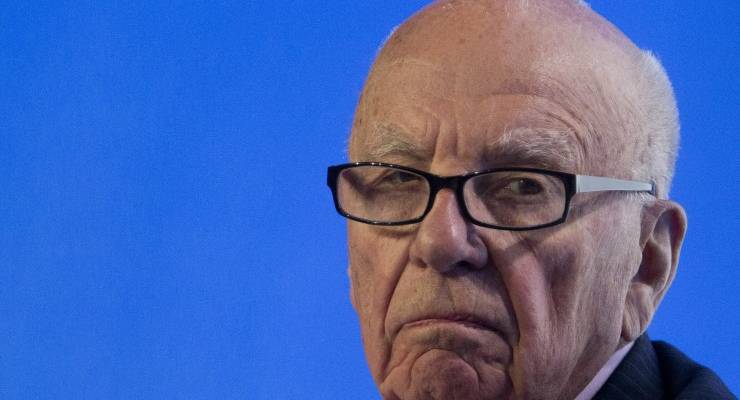
Australia’s increasingly concentrated and shrinking media landscape, online disinformation, government secrecy and overwhelmingly white newsrooms are all real threats to media diversity, a parliamentary inquiry has heard.
The Senate’s inquiry on media diversity in Australia, established by Greens Senator Sarah Hanson-Young last November, came on the back of former prime minister Kevin Rudd’s petition calling for a royal commission into the influence of News Corp. It gathered over 500,000 signatures.
With incredibly broad terms of reference, the inquiry aims to tackle everything from the state of public interest journalism and the effect of media concentration on democracy, to the impact of Google, Facebook and other tech giants. Submissions closed in December, with 65 contributions from media companies, regulators and community groups.
The media companies
For the established media players, the submissions provided plenty of opportunity to toot their own horns and point out what they were doing right. But reading between the lines, a common theme emerges: everyone agrees that Australian journalism — and, by extension, democracy itself — is in trouble.
The ABC points to “the rise of partisan outlets, misinformation/disinformation, attacks on science and professional journalism, attacks on press freedom and freedom of speech and the filter bubble effect which draws social media users into an echo chamber” as examples of further threats to democracy.
It also laments the loss of local news and the shuttering of smaller, regional outlets.
SBS points to the increased importance of digital media literacy in the era of fake news, where more content is largely online.
Interestingly Nine and the other commercial television networks have not provided a submission so far. News Corp, whose tremendous power over the media landscape was in many ways a catalyst for the inquiry, provided a brief submission, focusing largely on increasing government secrecy laws:
“The culture of secrecy arising from these legal provisions that unnecessarily restrict Australia’s right to know has permeated Australia’s attitudes and processes more broadly … This is deeply disturbing in a modern and robust democracy.”
Smaller, newer players are far blunter in their analysis. The Guardian Australia’s submission makes pointed criticism of the Nine-Fairfax merger, and its impact on media diversity.
“Guardian Australia exists because of concerns about Australia’s concentration of media ownership,” the submission says.
“But since Guardian Australia was established in 2013 media diversity in Australia has not increased. There have been two significant sales increasing concentration — Nine acquiring Fairfax and News Corp buying APN News and Media — and one decreasing it: Nine’s sale of regional and community papers to Australian Community Media.”
The Conversation criticised the hundreds of job losses that battered the sector in the first half of 2020, and called for better behaviour from the big players.
“There is a role for the commercial media sector, in particular major publishers such as News Corp and Nine, to balance profitability with integrity for the benefit of broad audiences,” it said.
The New Daily, a recent entrant to the media landscape, points to the difficulty of creating sources for public interest journalism.
“We are challenged by the proliferation of channels, the weakening of the advertisement supported business model, and the monopolistic practices of some of the dominant players,” it said.
A broader view of diversity
Other submissions take an even broader view of “media diversity” and hit out at the largely monocultural nature of journalism.
“The media industry does not reflect the multicultural reality of modern Australia,” The Conversation said, pointing to a recent survey that found 75% of presenters, commentators and television reporters are of Anglo-Celtic background.
That theme was picked up by community and lobby groups. According to Media Diversity Australia, the journalistic landscape is “seriously lacking in cultural diversity”, an issue that’s “symptomatic of a newsroom which is too insular, and disconnected from the population at large”.
First Nations Media called out the “failure of mainstream media to adequately reflect Aboriginal and Torres Strait Islander people in news and public discourse”.
“Reporting on First Nations matters by mainstream media is often problematic, taking a deficit approach and reiterating negative stereotypes,” it said.
The Judith Neilson Institute used its submission to talk about the importance of ideological diversity, the pitfalls of cancel culture, and provide an oddly glowing reference for libertarian podcaster Joe Rogan.
“We need more voices and forums rather than ad hominem vilification,” it said.








There is a Gordian knot tieing the LNP and big three media together as the latter act as PR and comms for the LNP (or better attacking Labor etc.), hence, custom or friendly policies can be ordered to return favours?
In other words the LNP are ‘owned’ by big media?
Repair the education system to something approaching that of Singapore and the remainder will fall into place N-R.
A rough definition is Post Truth is that the fake news is considered to have an equal footing with rigorous research. As I have pointed out previously, post truth is not synonymous with fake news. The two entities amount to a ‘Dad ‘n Dave’ act.
The alternative to improving the education system is to continue with a system where a yr12 (can not do a tap other than to pass notes in class) can depart from a school with a draw full of worthless certificates and awards deeming the individual a genius. Ditto for TAFE but we will resist the digression. Of course, a return to a “real” education system will necessitate a return to the good old days of winners and losers. The choice is ‘either-or’.
The issue is not with “partisan outlets” but how the public responds to them (qua post truth). Such an inference that the problem is ‘always’ the fault of a 3rd bad party merely displaces the issue from the origin.
Or the Habsburg’s, an education system based upon secularism, promoting rationalism and scepticism; difficult to find nowadays even in democracies….
Funny watching Limited News go on about (your) “right to know” : when you consider the way they “edit” news to the sort of narrative and agenda they peddle, from their dominance of the market, to present to we voting rubes?
The sort of hand-picked hand-made ‘political impression’ they generate, to pass on – to influence voter perceptions of fitness to govern and, thus, electoral outcomes – trying as they do to move enough of the swinging vote to deliver power.
Keeping enough up their sleeve to “persuade” otherwise erring MPs?
“The media industry does not reflect the multicultural reality of modern Australia,” The Conversation said, pointing to a recent survey that found 75% of presenters, commentators and television reporters are of Anglo-Celtic background.
What proportion of the population are of Anglo -Celtic background?
Significant e.g. those born Anglo/Irish 1.3 million, but on broad heritage, it is declining with some regions being the last redoubts versus urban areas where there is far more diversity?
Even Anglo Irish identity is being eroded by inter marriage with main groups of Europeans, Asian and Middle Eastern heritage; strength through diversity of the species.
Prior to WWII and the mass immigration of the 1950s, over half of this country’s population was derived from the island of Britain and well over one third from John Bull’s Other Island.
The other few per cent were surprisingly diverse, frequently from the Indian subcontinent – “Afghan” cameleers – and not a few 49ers from the USA – Freeman Cobb & King O’Malley being immigrants.